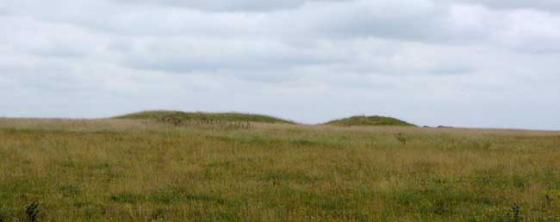Curiously, to support my speculation about a golden torc [see Tan Hill – Ed.], I found the following in M E Cunnington’s ‘Introduction to the Archaeology of Wiltshire’ (1949).
A piece of gold torque, or collar, weighing about 2 1/2 oz., was found by a man digging hard chalk on Allington Down, near Tan Hill, in 1844.* When the early Iron Age site at All Cannings Cross was being excavated in 1920-22 an old man who had known the finder of the torque gave the following account of its discovery. At first the finder thought it was brass, and hung it on a hurdle near where he was digging, and there it stayed for about a week; he must have had his doubts about it, for he then took it away and showed it to his master, who offered him half a crown for it; this he refused, because he thought, if the master was willing to give him half-a-crown, it’s likely as not to be worth more; so he took it to a bank in Devizes, where they soon found it to be solid gold, and thus led it to being claimed by the lord of the manor, the then Lord Ilchester, in whose family it is still.
I bet he wished he’d kept his mouth shut. The common law of treasure trove at the time was “when any gold or silver, in coin, plate or bullion hath been of ancient time hidden, wheresoever it be found, whereof no person can prove any property, it doth belong to the King, or to some Lord or other by the King’s grant, or prescription”. But I don’t suppose a poor digger had much chance of arguing it wasn’t ‘hidden’.
Anyway, so perhaps there was local knowledge that a gold torc had been found sometime in the past, and this had got converted/incorporated into the story below? Who knows the Complicated Workings of Folklore. Or it could really have been a ghost of course.
*(also see Wilts Arch Mag 36 p435)



























































































































































